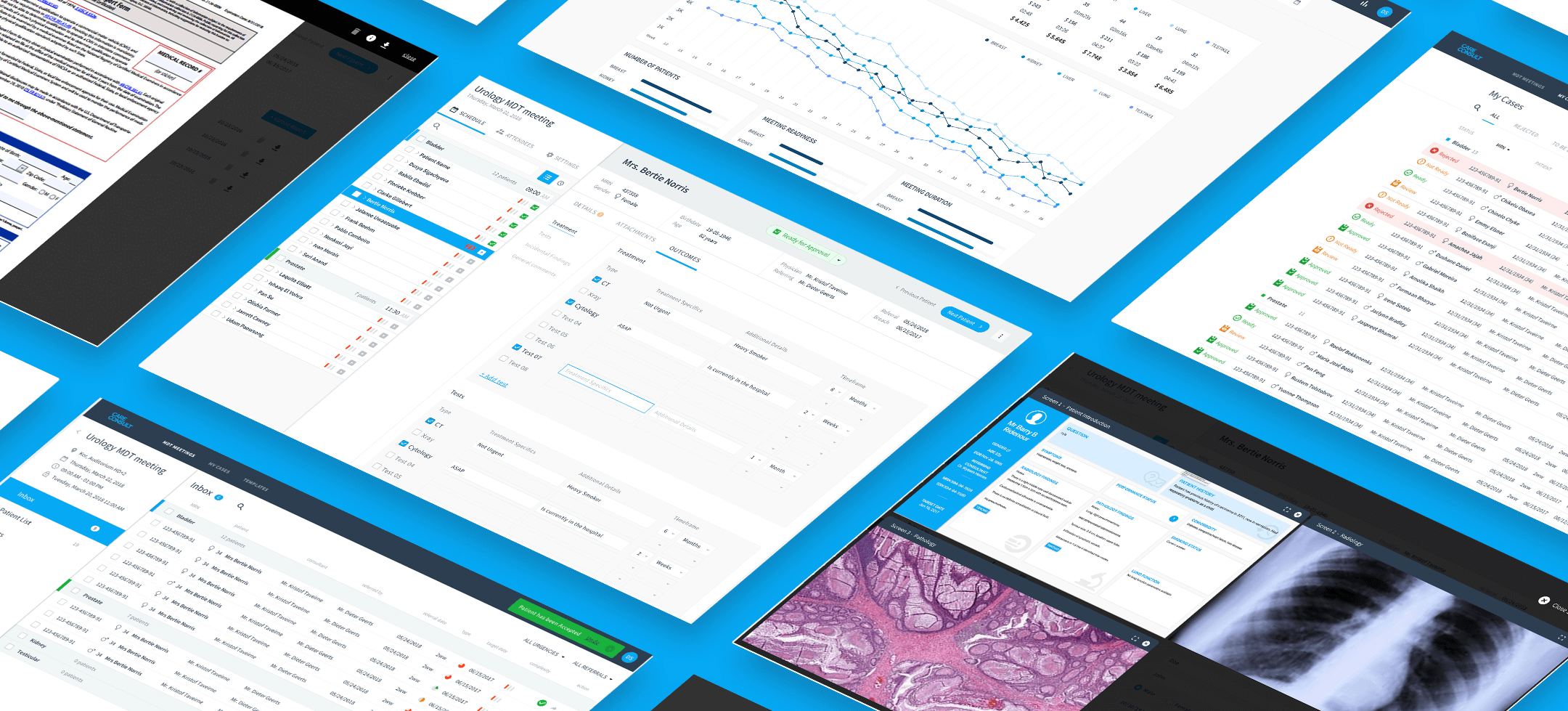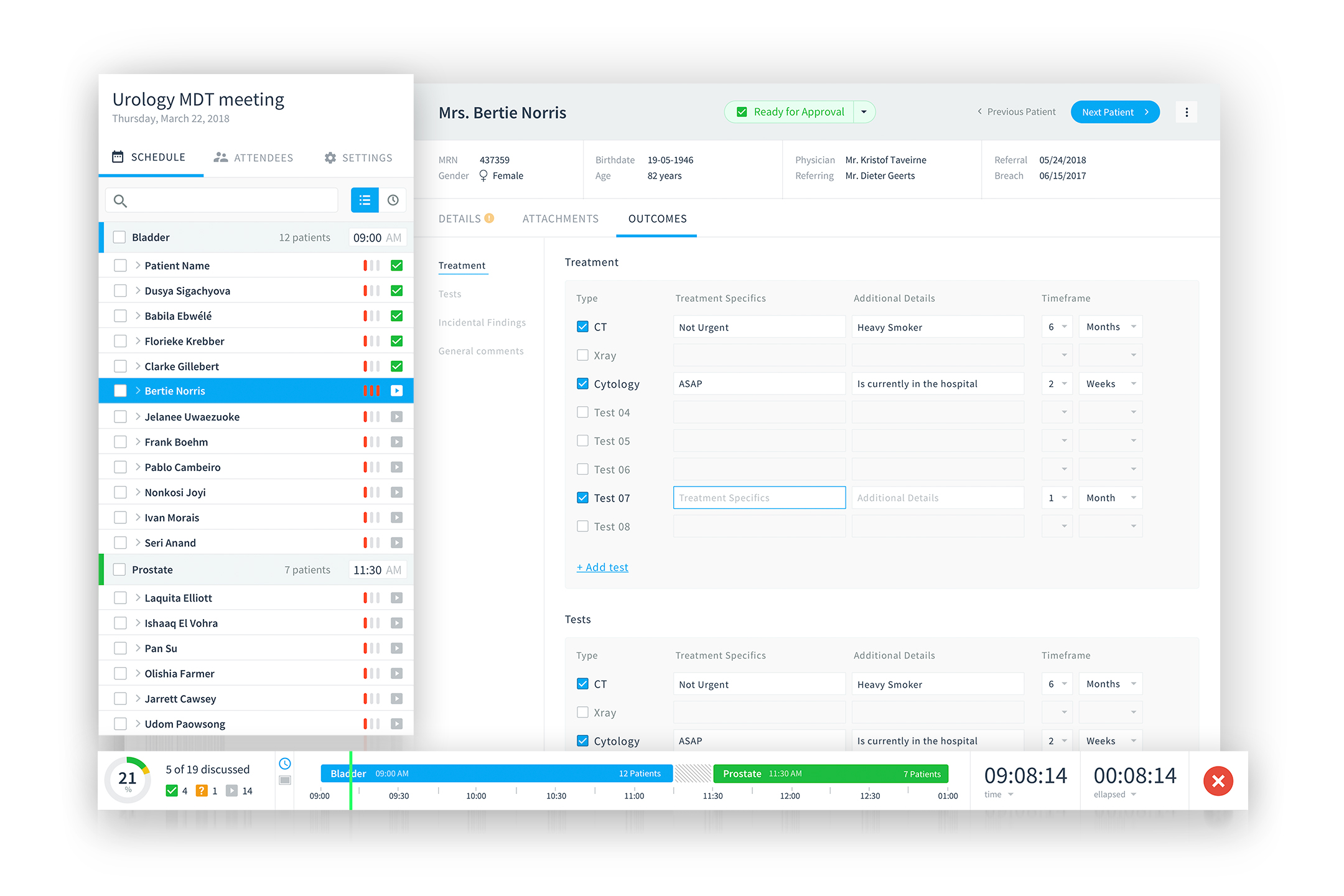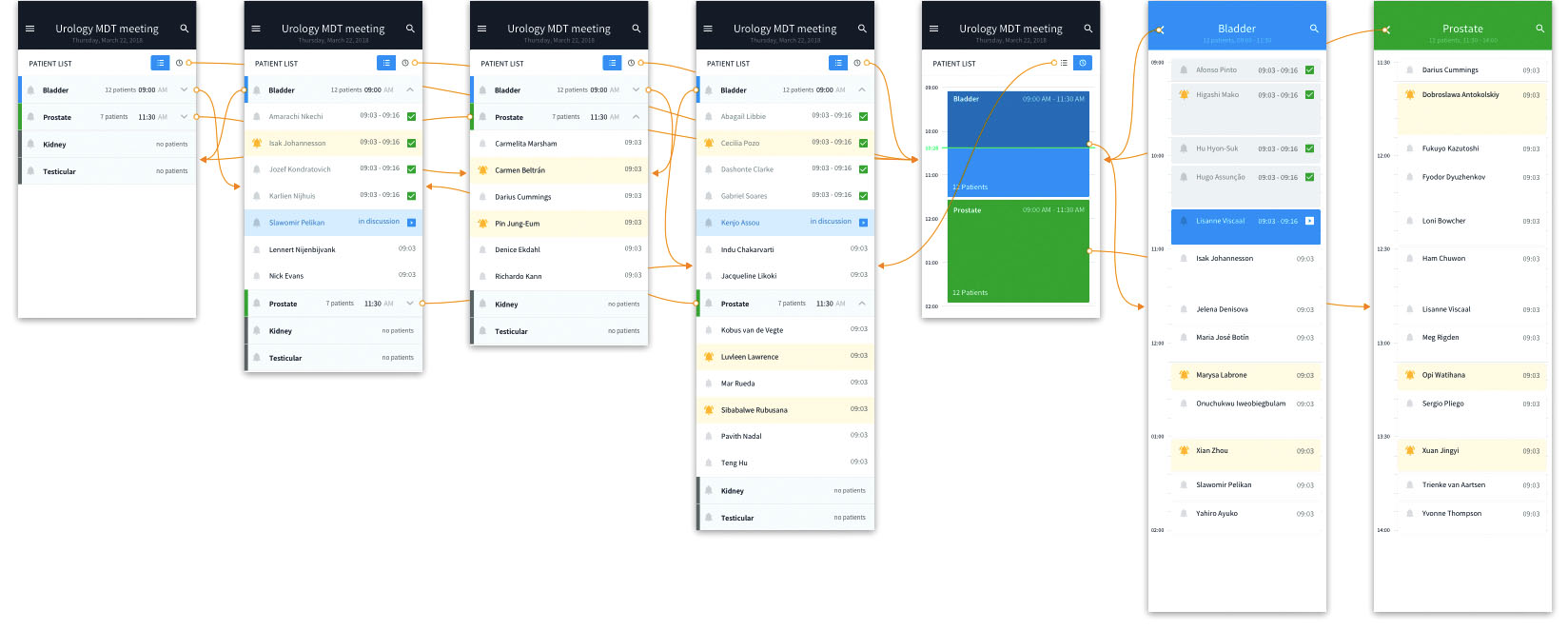Managing meetings through a good UX.
Barco Synergi

The challenge
Barco is a global company that aims to transform our quality of life through technology. Based in Belgium, Barco is best known for their multimedia systems such as projectors and video walls. Their Clickshare product makes casting your screen during meetings a walk in the park. But Barco has been active in many other markets for a long time. In the field of healthcare, Barco has been focusing on transforming the delivery of care.
The Barco Synergi incubator conceptualized a tool to streamline multidisciplinary team meetings. These meetings are held to discuss and define the clinical path forward in a patient’s battle against cancer. Since up to seventy patients are discussed, these meetings can last several hours. To keep everything as efficient and fast-paced as possible a good UX is key. Barco teamed up with Verhaert Digital to solve this UX challenge.

The approach
The Barco team brought us up to speed regarding the technical functionalities of the tool and delivered in-depth research about stakeholders and users. The goal was to build an intuitive user experience that enabled users to perform these meetings as efficiently as possible.
Our team started by analyzing the needs of different users through several brainstorming sessions at the Barco headquarters. In addition to analyzing the vision of our client, we outlined a plan to improve the application’s ease of use and to add the necessary functionalities. There was no need to go to square one since a lot of useful research was already done and ready to be analyzed.


The solution
We broke down the process into three phases: preparing the meetings, coordinating meetings and finalizing decisions. We developed simple functionalities to gain time without compromising quality. Participants need to focus on the patients, not on the tool.
Framing every patient’s case on a scale of complexity gives an estimate of the time needed to discuss their situation. These estimations are used to create realistic planning and result in a drastic improvement in the overall efficiency of the MDTs. While data from past meetings is analyzed intelligently by the application to improve its accuracy.
By incorporating a timeline into the application, we developed an overview of the progress in real-time. This in combination with an overview of upcoming patients to be discussed allows for better time management of all participants as they get notified about upcoming cases that are relevant to their field of expertise.

When it came to designing the user flow during a meeting, we focused on sharing information and using this information to automate the decision-making as much as possible. Content can be coordinated from multiple users to multiple screens, participants can opt-in and share insights remotely and decisions are captured fast and efficiently. Giving users the ability to view patient’s documents on the fly, without interrupting the meeting.
We ended up with a simple UI that drastically optimized time management and improved each participant’s efficiency. Most importantly this solution simplified the objective of each case: defining the next step.